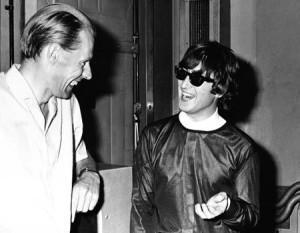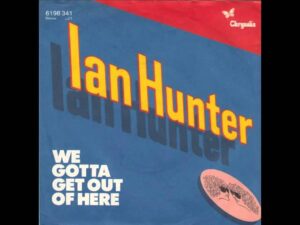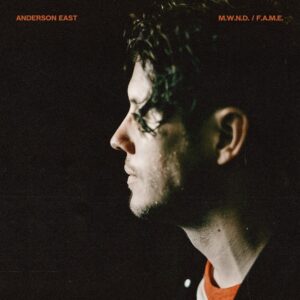 What does a record producer do? What does he bring to the studio? In the case of Phil Spector, it was usually a revolver, a cloud of dread, and a closet full of percussion instruments. Nick Lowe seems to have brought bonhomie and the shortest path through the session to the pub afterwards. To read the many encomiums to George Martin these past few days, it is evident he brought taste, adventurousness, humor, a sense of when to step in or step out, and ace arranging skills to his sessions. Also, reputation—certainly after his work with the Beatles but even, maybe most importantly, in that very first session with the Liverpudlians. They came into the studio that day and saw in Martin a clone of the schoolteachers they all hated; they left knowing they had a secret ally within the system. Certainly that stature helped Martin corral and focus “the boys” over the next several years just as it helped him attract the best work of motivated artists after the breakup.
What does a record producer do? What does he bring to the studio? In the case of Phil Spector, it was usually a revolver, a cloud of dread, and a closet full of percussion instruments. Nick Lowe seems to have brought bonhomie and the shortest path through the session to the pub afterwards. To read the many encomiums to George Martin these past few days, it is evident he brought taste, adventurousness, humor, a sense of when to step in or step out, and ace arranging skills to his sessions. Also, reputation—certainly after his work with the Beatles but even, maybe most importantly, in that very first session with the Liverpudlians. They came into the studio that day and saw in Martin a clone of the schoolteachers they all hated; they left knowing they had a secret ally within the system. Certainly that stature helped Martin corral and focus “the boys” over the next several years just as it helped him attract the best work of motivated artists after the breakup.
Rolling Stone (I know; I, too, was surprised it still exists) just ran a sort of interesting list of Martin’s “20 Great Non-Beatle Productions” [https://www.rollingstone.com/music/lists/george-martin-20-great-non-beatles-productions-20160309/cheap-trick-worlds-greatest-lover-1980-20160309]. Anything that might possibly turn people on to Jimmy Webb’s “The Moon’s a Harsh Mistress” can’t be all bad (look for Glen Campbell’s version, though), but I did not find it a compelling argument for Martin’s genius. What was needed, I felt, was a test case; a before-and-after example that shows what Martin could do with a song.
Happily, we have one in “Call Me, Tell Me” by Craig Fuller. It first appeared on Pure Prairie League’s 1972 album Bustin’ Out, where it was somewhat overshadowed by the big hit “Amie,” but a lovely song nonetheless.
[]
Fast forward four years: Fuller has left Pure Prairie League and landed in the B-squad supergroup American Flyer.* They enlist George Martin to produce their debut album, which features a new version of “Call Me, Tell Me.”
[]
Certainly the fact that Fuller had sung the song over those four years deepened his understanding of it, yet that alone cannot explain the transformation of the song. Every aspect of Martin’s production—from the tempo to Fuller’s vocal to what is, for my money, the most gorgeous orchestral writing of Martin’s career—unlocks and delivers on potential the first version (which sounds tentative and undercooked in comparison) never hinted at.
So: a masterpiece on a par with “A Day in the Life”? No, “Call Me, Tell Me” is no musical landmark. But it’s as good an example as any of what Martin brought to the studio.
– Tom Fredrickson is the proprietor of the unparalleled music blog, Lost Wax Method.
* American Flyer combined spare parts from Pure Prairie League (as we have said), Blood Sweat and Tears (!), the Blues Magoos (!!), and the Velvet Underground (!!!!!). They made two pleasant-enough albums but, perhaps not surprisingly given their origins, this awkward amalgam ended up cancelling out the virtues any one member might have brought to the party. At a time when the Eagles were ascendent and America was celebrating a string of hits, and while CSNY was, together and separately, charting the outer bounds of decadence, the logic of such a band was unimpeachable—at least within the conference rooms of record labels. Out in the real work, such reverse engineering rarely works for long. If there is any truth at all to HBO’s Vinyl, it’s not hard to imagine that American Flyer was cooked up by a couple of suits over lines of coke.


